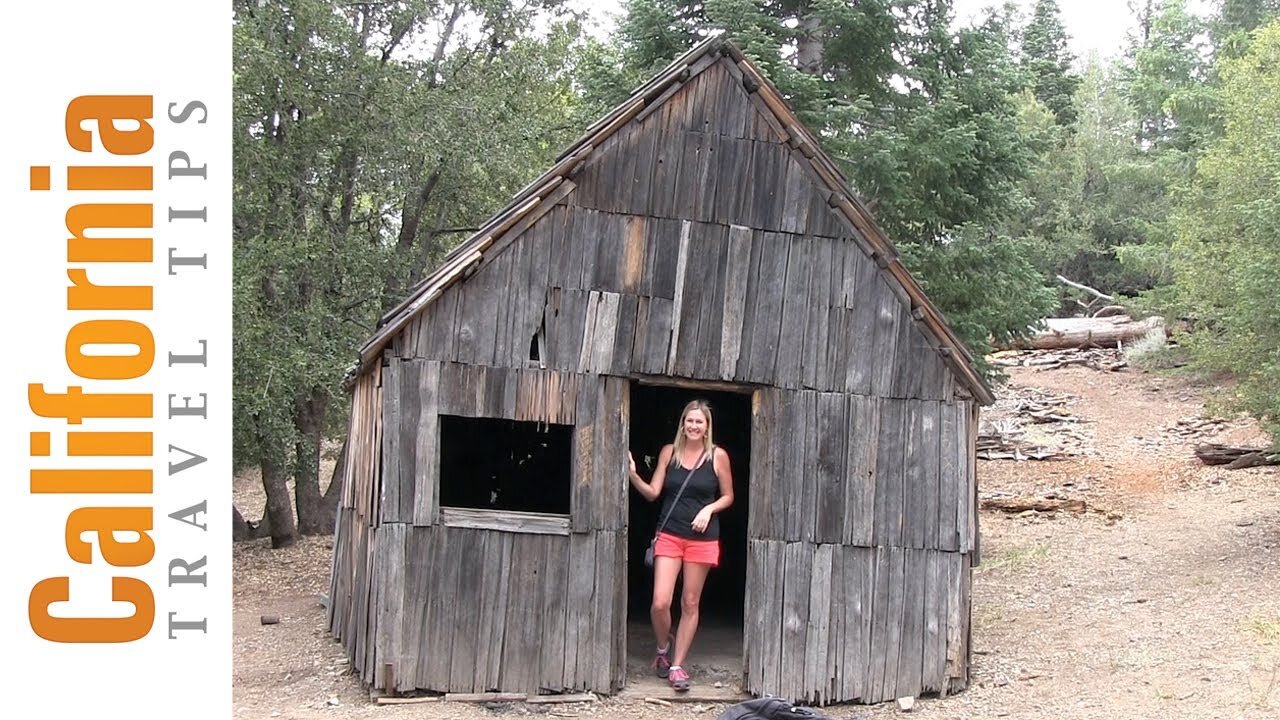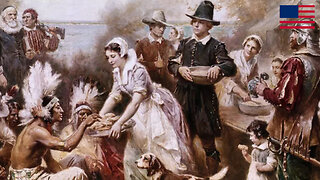Premium Only Content

Big Horn Mine : Miner Vincent Cabin : LA Hiking Trails : California Travel Tips
In this episode of "California Travel Tips," Veronica Hill goes on one of LA's best hikes — the trek to Big Horn Mine and Miner Vincent's Cabin in the San Gabriel Mountains.
The trailhead to the cabin and mine is located at Vincent Gap on Highway 2 (Angeles Crest Highway), which connects metropolitan Los Angeles with the mountain village of Wrightwood. Be sure to buy a $5 adventure pass at the Grassy Hollow Visitor Center before heading out, or you're likely be fined. You can also buy passes at Jensen's in Wrightwood, or Big 5 Sporting Goods stores.
Plan on a half day for the moderate 4-mile round trip hike to Big Horn Mine, which follows an old wagon trail around the north slope of Mount Baden-Powell. The hike to Vincent's Cabin is roughly 2 miles round trip. Be sure to bring along snacks, plenty of water, sunscreen, and some bug spray.
When you come upon the signs, you're going to want to stay right for the mine, or head downhill to the left for Vincent's Cabin. The cabin trail heads down into the valley, cutting through several types of terrain. During the hike, you'll see wildflowers, manzanita, Jeffrey pines, and even a lizard or two.
There's no cell service out here, so I always carry my GPS to make sure I'm going in the right direction. You can download directions with the EveryTrail app.
When you come upon these two downed trees you're going to cross the log and head down the trail. After walking nearly 25 minutes, the cabin comes into view. This little clearing was the home of prospector Charles Vincent Dougherty, a Civil War veteran who arrived in Los Angeles around 1868. On the run for murdering an Arizona claim jumper in self defense, he ended up hiding out here in San Gabriel mountains.
He built a one-room cabin with shingles hewn from nearby trees, and changed his name to Charles Tom Vincent. The fireplace was crafted from locally harvested stone, and Vincent placed two bunks on each side of the fireplace. He lived here in solitude for nearly 40 years. While you're here, you can check out some of Vincent's artifacts, including old tin cans, bottle caps and a frying pan. Be sure to leave everything as you found it so others can enjoy its historical significance.
In 1895, while hunting Big Horn Sheep, Vincent struck gold. Big Horn Mine produced 3,701 ounces of gold, 2,430 ounces of silver and 1,357 pounds of copper — generating roughly 100,000 dollars. Recently, the gold mine and its surrounding 277 acres was purchased by the U.S. Forest Service for $2 million.
According to the L.A. Times, there are still roughly 262,000 ounces of gold in the mine — which is worth more than $430 million today.
There are a few washed out areas and scrambles to get to the mine, but it's well worth the trek. The crumbling mine complex is quite impressive, with a maze of passages and tunnels totaling about 3,500 feet. If you peek inside, you can still see some of the ore cart rails, but most of the sites have been blocked off (and it's always a bad idea to enter an old mine shaft). The Bighorn Mine stamp mill is very rickety, but offers amazing views of the valley, Mount Baldy and Iron Mountain. This is a great place to stop for lunch before heading back down to Vincent Gap. We think this is one of LA's best hikes. Hope you do too!
Vincent lived in this valley until the age of 83, making yearly trips into LA to watch the baseball games. He'd bring along a sack of gold each time, placing it in a safe deposit box. Vincent died in 1926, and is buried at the National Cemetery in Los Angeles.
For more information about the history of Big Horn Mine and Miner Charles Vincent Dougherty, visit the Wrightwood Firehouse Museum.
SUBSCRIBE! http://tinyurl.com/p2fveuj
-
 52:20
52:20
The Quartering
2 hours agoKamala Harris Has Drunken Unhinged Rant & Joe Biden Just Robbed America
55.7K15 -
![Days Gone: Old Country Road - Part 3 [PC] | Rumble Gaming](https://1a-1791.com/video/s8/1/Q/q/G/_/QqG_u.0kob-small-Days-Gone-Old-Country-Road-.jpg) LIVE
LIVE
NeoX5
3 hours agoDays Gone: Old Country Road - Part 3 [PC] | Rumble Gaming
348 watching -
 LIVE
LIVE
CAMELOT331
2 hours agoRide N' Die 24 Hour LAUNCH Ft Ethan Van Sciver, Cecil, ItsaGundam, That Star Wars Girl, Shane & MORE
489 watching -
 12:53
12:53
DeVory Darkins
16 hours ago $4.38 earnedKamala Intoxicated Video Message to Staff Shocks Internet
8.94K35 -
 3:23:26
3:23:26
Pardon My Take
7 hours agoSUPER MEGA THANKSGIVING PREVIEW, KIRK COUSINS WANTS TO BE IN WICKED 2 + PFT/HANK RIVARLY CONTINUES
5.04K1 -
 44:59
44:59
The Kevin Trudeau Show
3 hours agoWhat Women Do Wrong in Relationships (From a Man’s Perspective) | The Kevin Trudeau Show | Ep. 69
10.7K4 -
 19:49
19:49
This Bahamian Gyal
14 hours agoFIRED after VENTING online about ELECTION results
5.28K9 -
 LIVE
LIVE
REVRNDX
3 hours agoYOUR NEW FAVORITE RUMBLE STREAMER
153 watching -
 1:04:41
1:04:41
Russell Brand
3 hours agoIs This the End? Climate Emergencies, Kamala’s Chaos & Political Meltdowns EXPOSED! – SF502
97.1K243 -
 LIVE
LIVE
The Charlie Kirk Show
3 hours agoThe Harris Team's Comical Post-Mortem + Trump the Peacemaker + AMA | Paxton, Greenwald | 11.27.24
6,489 watching